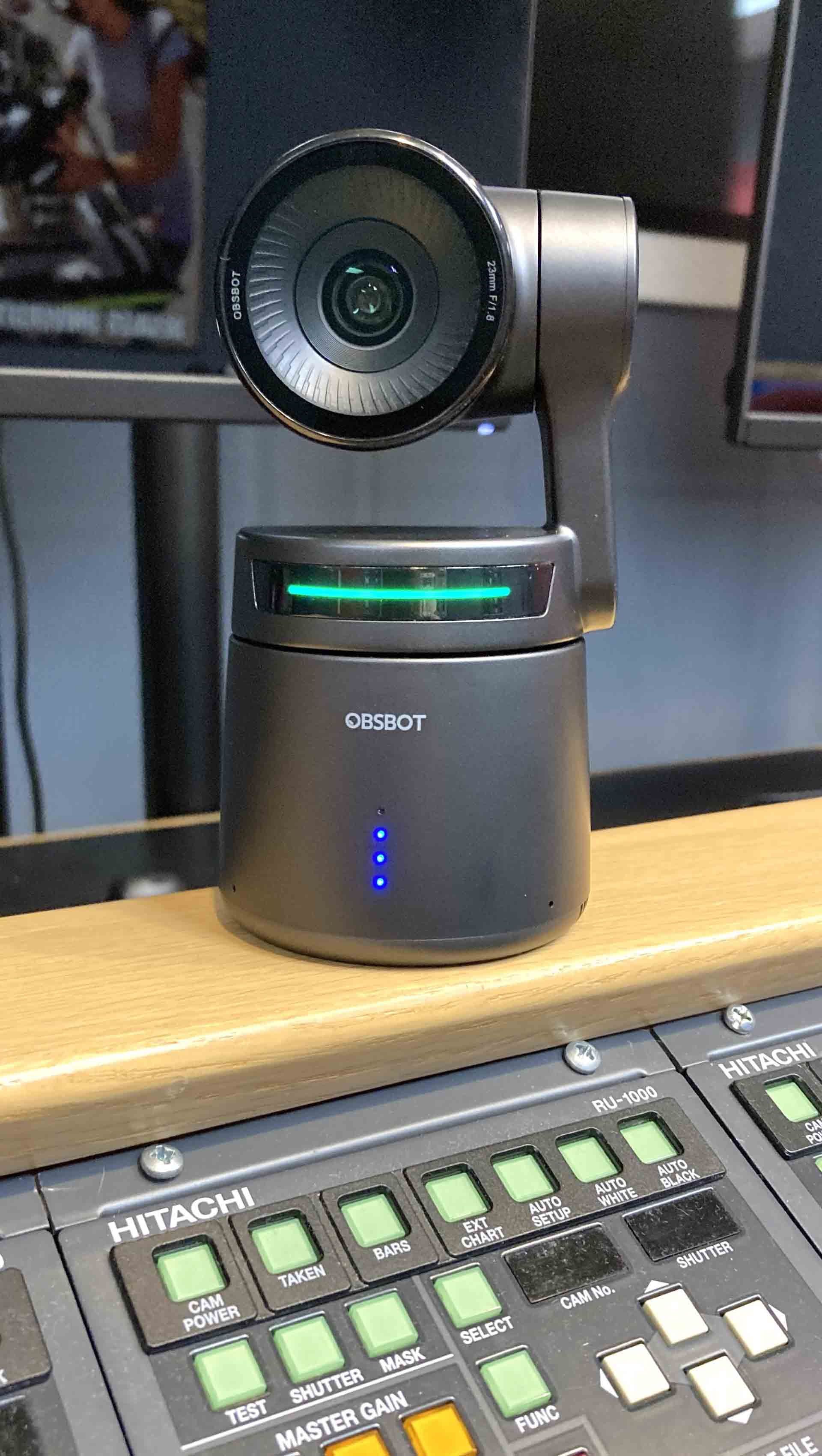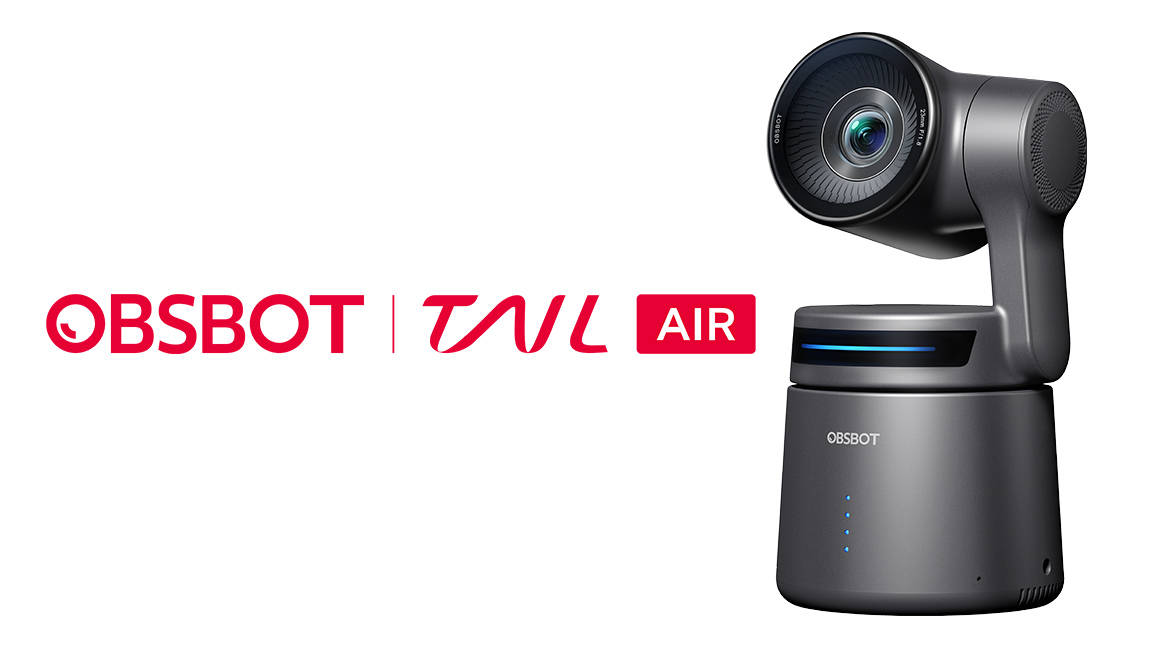The OBSBOT Tail Air is designed specifically for dynamic, multi-camera production environments such as churches, sports, and live events. This miniscule PTZ camera will track whatever subject you put in front it, making it ideal for capturing the action in high-energy, professional content creation settings.
Mini But Mighty
Featuring an 8MP, 1/1.8-inch CMOS 4K sensor with a F1.8 eight element lens and 4x digital zoom, the Tail Air records in 4K at up to 30 fps and HD at up to 60 fps. The unit itself measures 5.2x2.88x2.73 inches and weighs slightly above 12 ounces—we’re getting close to a sparrow’s dimensions. A minor pet peeve: no lens cap.
[Get Excited About These New PTZs in 2024]
Most PTZ cameras will record video quite well, but the Tail Air has Human Tracking, which works independently to keep the object in frame. If your subject is non-human (dogs, cats, horses, etc.), you've got the Animal Tracking feature. There's even Object Tracking, so really there's nothing this camera can’t track. This is all accomplished with Time of Flight (TOF) technology, which uses infrared light to calculate the distance between the subject and the camera.
Now that you know what the Tail Air can do, how do you get the signal to its destination? You can use the micro-HDMI port, USB-C port, or export via an Ethernet cable with a USB-C-to-Ethernet adapter as your options to send content to a screen or live stream.
Facing the unit, the camera rests on top of a gimbal. Directly below is a blue LED status indicator as well as four blue LEDs indicating the level of the battery’s charge. Around the side of the round base of the unit is the USB–C port and a microSD card slot, which is above the Micro HDMI port. On the bottom is a female 1/4-inch port for tripod mounting.
Out of the Box

The camera is stored in a zippered bag that arrived in a red box. I charged the Tail Air using the provided USB-C cable attached to a USB-A AC adapter. I also download the OBSBOT App for my iPhone. Pressing the power button activates the unit, and the gimbal adjusts itself and displays a green bar under the camera. I opened the OBSBOT Start app, selected Wi-Fi, and my Tail Air was up and running. (OBSBOT also offers a mini remote control that can control up to three Tail Air cameras, which I did not review.)
[SCN Hybrid World Review: Logitech Going Beyond Good Enough]
Along the left edge of the app's screen are several controls. From here, you can disconnect the camera, review camera and streaming settings, adjust audio from the Tail Air's built-in microphone, and more. Across the bottom are six icons and the record button. From here you can choose your AI mode, movement speed, tracking mode, framing, positioning, presets, and Gimbal View, where you use your finger to position the gimbal.
Try not to be overwhelmed or bogged down with all the OBSBOT’s features. My humble advice is to just place it where you want to capture your given subject and let the camera do the rest. It’s truly amazing how this Lilliputian device can frame, follow, stream, and record what the sensor captures. Using my home’s Wi-Fi, I was able to stream my video, once I had a microSD inserted.
For the ultimate in control, the Gesture Control 2.0 feature allows the on-screen talent to use hand movements to zoom in or out, lock or unlock the subject you’re tracking, and even stop or start recording. After a few minutes in trial mode, I was able to master the “gestures” and to get the camera to do what I wanted. But don’t get carried with gesture control; gestures need to be large before the camera does what you want it to do. My students tried to foil AI by doing tiny gestures close to their body and creating other gestures I won’t describe. Score 100% for the OBSBOT—it did what it was supposed to do.
[SCN Review: Jabra Videobar Is Built for Busy Meetings]
There’s really not much to not like about the OBSBOT. Nothing else come close to what it does for its size and price, and the battery life has been outstanding. I’ve even become more popular because students and other faculty stop by my office to play with the “little camera.” You get high-quality video, plus the camera is small enough that it's not a distraction. It's a great choice for situations where you need to discreetly (and automatically) follow people, animals, or objects.

